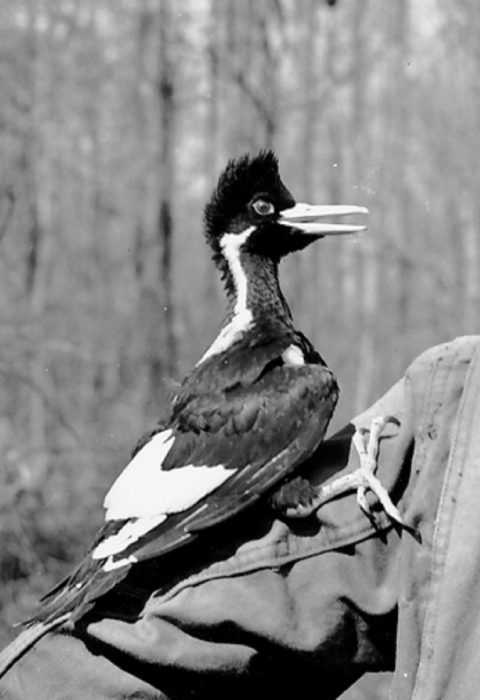Overview
The ivory-billed woodpecker is a charismatic species of large woodpecker. It was listed in 1967 as endangered under precursor to the ESA, the Endangered Species Preservation Act of 1966. The last commonly agreed upon sighting of the ivory-billed woodpecker is in April 1944 on the Singer Tract in the Tensas River region of northeast Louisiana. Primary threats to it are the loss of mature forest habitat and widespread collection of the species for its feathers and parts.
Scientific Name
Identification Numbers
Characteristics
Habitat
In historical sources suggested it lives in large forests with a portion of large trees in decay.
A dense growth of trees and underbrush covering a large tract.
Physical Characteristics
The Ivory-billed woodpecker has an overall length of approximately 19 to 20 inches (48 to 51 centimeters), an estimated wingspan of 30 to 31 inches (76 to 80 cm).
According to historical sources, the ivory-billed woodpecker is 454-567 grams (16 to 20 ounces).
The ivory-billed woodpecker has striking black-and-white plumage; robust white, chisel-tipped bill; lemon-yellow eye; and pointed crest. Males are red from the nape to the top of their crest with black outlining the front of the crest. Females have a solid black crest which is somewhat more pointed and slightly recurved to point forward. The bases of the males red crest feathers are white and may have allowed a spot of white to be displayed on the side of the crest when the feathers were fully erect.
The ivory-billed woodpecker has a nasally “kent” call. It resembles the sound caused by the blowing on the mouthpiece of a clarinet or saxophone or the sound of a toy trumpet. The notes of these calls are given singly, doubly or in a series of three such as “yent-yent-yent” as recorded at a nest in 1935. Like other woodpeckers of the genus Campephilus, they make a non-vocalized rapid, loud double knocking. This “rapping” is often described as a “double knock” or “double rap” consisting of two rapid knocks. However, these raps can also occur singly.
Similar Species
Geography
Arkansas, Florida, Georgia, Illinois, Kentucky, Louisiana, Mississippi, Missouri, North Carolina, Oklahoma, South Carolina, Tennessee, Texas.
Timeline
Explore the information available for this taxon's timeline. You can select an event on the timeline to view more information, or cycle through the content available in the carousel below.
10 Items